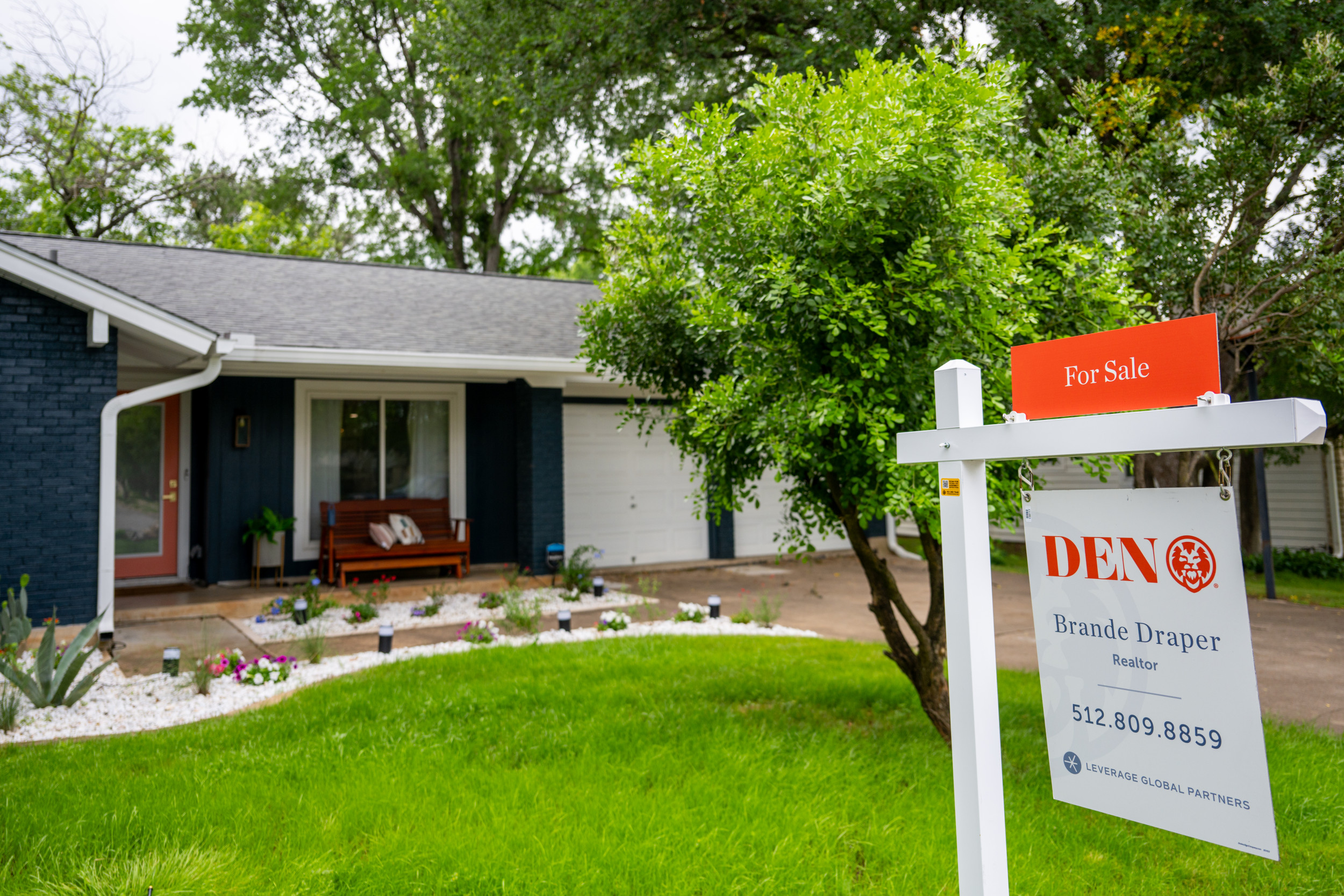
Almost 20 percent of homes for sale in the U.S. housing market last month had their originally listed prices cut by sellers in an attempt to attract reluctant buyers, according to new data from Realtor.com.
It is the highest number of listed properties offering price reductions since 2016, signaling that the market is about to reach a breaking point that would flip it solidly in favor of buyers.
Why It Matters
For years, sellers have had the upper hand in the U.S. housing market. The pandemic homebuying frenzy, triggered by historically low mortgage rates, and a chronic housing shortage sent home prices through the roof, with home values jumping by 8 to 9 percent every year since 2019.
The market is now different for sellers. Elevated mortgage rates, skyrocketing prices and rising housing costs—including homeowners association fees and home insurance premiums—have pushed many prospective buyers to the sidelines, dampening demand. A growing number of homes for sale across the country are now spending more time on the market before going under contract or failing to sell at all.
Increasingly, sellers are having to adjust their price expectations and meet buyers where they are, offering discounts and other perks to get bidders.
What To Know
May marked the fifth consecutive month of increasing price reductions in the U.S., according to Realtor.com data. In May 2024, by comparison, about 17 percent of homes for sale had price drops.
These progressive increases show how the U.S. housing market has changed over the past few months. Inventory, which was chronically low for years since the pandemic buying boom, is rising because many sellers who were waiting for mortgage rates to come down have stopped hoping for that to happen anytime soon. But it is also rising because more listings are sitting idle in the market.
The total national inventory of homes for sale climbed 31.5 percent year over year in May, according to Realtor.com, marking the 19th consecutive month of growth but still falling about 14 percent short of pre-pandemic levels.

Brandon Bell/Getty Images
While there is still a gap between supply and demand in the U.S., which Realtor.com estimated at almost 4 million homes, many aspiring buyers cannot afford to purchase a property because of elevated mortgage rates and stubbornly high prices. Growing economic uncertainty around the effects of the Trump administration’s tariffs has also discouraged consumers—24 percent, according to a recent Redfin survey—from making major purchases, such as a house.
The result: Sellers are now outnumbering buyers in the market by about 500,000, according to Redfin, the biggest margin in over a decade. The increased competition between sellers is leading them to offer price discounts to seal the deal on their home sales.
Price reductions are more common in the South and the West, where the highest number of new homes have been built in recent years and where inventory is growing the fastest. The West saw a 40.7 percent surge in price increases, while the South’s inventory rose by 32.9 percent.
Major metropolitan areas—such as Las Vegas, San Diego and Washington, D.C.—registered the sharpest year-over-year increases in available listings, pressuring sellers to become more flexible.
Even with these discounts, sales are dwindling at the national level. Pending home sales in May fell by 2.5 percent year over year, according to Realtor.com data.
What People Are Saying
Danielle Hale, the chief economist at Realtor.com, said in a recent report: “Price reductions have become more common in each of the past five months, a trend suggesting that sellers are adjusting their expectations in the face of affordability challenges and weaker buyer demand in some markets.”
Chen Zhao, the head of economic research at Redfin, told CNN last month: “Generally, the ratio of sellers to buyers seems to be a predictor for home price growth, but with a lag of about three to six months. … The reason we think home prices will fall by 1 percent and not something larger is because it’s actually very hard for home prices to fall unless sellers have to sell. Sellers can always decide they don’t like the prices that are currently in the market and decide to stay in their home.”
Corey Stambaugh, a Redfin premier agent in North Carolina, told ConsumerAffairs last month: “A lot of sellers are still emotionally tied to the peak prices of 2021 and 2022. But after a few weeks with no offers, reality sets in and they’re willing to negotiate or offer concessions.”
Karen Pohl, a real estate agent in Las Vegas, told CNN last month: “Based upon previous spring selling seasons, I have noticed a lot of listings are sitting longer on the marketplace (this year). I think there are a lot of sellers who still have really ambitious pricing for their homes, and it may be time to get realistic with their pricing in order to be competitive in the marketplace.”
What Happens Next
Despite the current dynamics at play in the U.S. housing market, home prices have remained relatively stable. Redfin experts expect home prices to fall by 1 percent by the end of 2025, but the declines may be more dramatic in the South and the West than in the Northeast, where the housing shortage is still acute.




